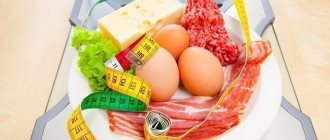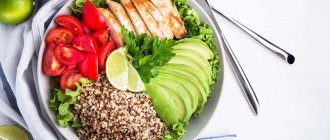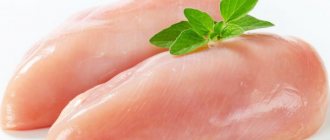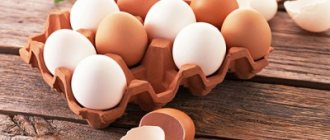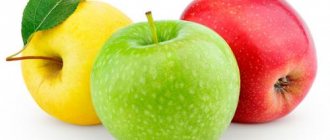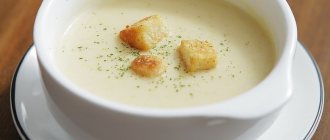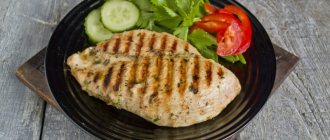Carbohydrate counting is the gold standard when it comes to maximizing glycemic control while expanding your food choices.
Sure, you can get by with a predetermined dose of insulin or by randomly guessing how much insulin to take for your regular meals and snacks, but carb counting allows for a much higher level of dexterity as you try different amounts of carbs and different foods outside your diet. diet
If you like to eat the same foods all day long, then not knowing how to count carbs isn't a big deal. But most people (with or without diabetes) enjoy getting out of their daily routine, trying new experiences, and living life to the fullest!
If you have diabetes, trying a new food can be a scary experience because you're not sure how it will affect your blood sugar. Learning to count carbohydrates can be liberating because it provides stability during times of uncertainty.
In this article, I'll cover how to count carbs, the tools and apps available to help you, how to "guess" your carb count when you eat out, and how to account for protein and fat before calculating insulin doses. How to calculate your insulin dose?
How to count carbs
Counting carbs may seem daunting at first, but the basic concept is not difficult, and access to modern apps and other tools has made it even easier.
Step 1: Determine Total Carbohydrates
The food label is a great tool for making it easy to find not only the total amount of carbohydrates in each serving, but also the type of carbohydrates, such as sugar and dietary fiber.
To find out how many carbohydrates are in a food with a nutrition facts label, you first need to determine the serving size. Calorie and nutrient amounts listed on the label are based on one serving size.
It is important to determine the serving size because the amount that fills you may be significantly larger than the prescribed serving size on the label.
To add carbohydrates when you have access to the nutrition label, use the following:
- Determine your serving size
- Look at your total carbs
- Multiply the total amount of carbohydrates by the number of servings you will eat.
If you don't have access to a food label (for example, for fresh produce), you can use a list of common foods and their carbohydrate content or one of the many available food tracking apps. We'll come back to this later in this post.
Step 2: Subtract the amount of fiber and sugar alcohols
Artificial fiber and sugar alcohols are common ingredients in many protein bars, shakes, and various other low-carb products.
Simply put, dietary fiber refers to nutrients in the diet that cannot be digested by gastrointestinal enzymes. If you can't digest a nutrient, it can't raise your blood sugar, so you don't need to take insulin when you eat that nutrient (fiber).
So you need to subtract the fiber from the total carbohydrates to calculate the total amount of carbohydrates that actually raise your blood sugar. This process is known as counting "net carbs."
The net carb formula is to subtract the fiber (and half of any sugar alcohols, if present) to get the total net carbs, which raise your blood sugar and therefore require insulin.
The reason sugar alcohols must be divided in half before subtraction is because sugar alcohols are only partially digested. With partial digestion, your blood sugar will still rise, but not to the same extent as with regular sugar.
What is the effect of sugar alcohols?
As a rule of thumb, if your serving of food contains less than 5 grams of fiber, I suggest not worrying about subtracting it. If your food contains sugar alcohol, I recommend dividing this total by two and subtracting it from the total carbohydrates. If the food contains significant amounts of fiber and sugar alcohols, the following formula can be used.
Net Carbs = Total Carbs - Fiber (if over 5 grams) - (Sugar Alcohols/2)
Note. There are many different opinions about how much fiber you need to subtract to get to your net carbs. Some people only subtract 50% fiber or even less. You will need to do a little trial and error to find the amount that works for you.
Calculation of the amount of carbohydrates per day
The recommendations are the same for men and women: 45-65% of the daily calorie intake or 3-5 g per 1 kg of body weight.
If we talk about the quantitative norm of carbohydrate consumption, then with a high fiber content for women, their amount should be 50-300 g per day.
The exact figure depends on your level of physical activity, carbohydrate tolerance, and the goals you set for yourself. If you want to lose weight, then reduce the amount of carbohydrates, if on the contrary, then increase it.
Which carbohydrates should you focus on, especially when losing weight?
If the average carbohydrate intake is 300 grams per day, then distribute them this way:
- complex carbohydrates - 210 g;
- fiber - 40 g;
- fructose - 25 g;
- sucrose - 25 g (WHO recommends no more than 10% of all carbohydrates, ideally no more than 5%).
But don’t be alarmed by the calculations; technological progress has made the task of managing our diet much easier. Download a mobile app to count calories and you will make your life much easier.
Use a few calculation tips:
- Be sure to buy a kitchen scale.
Without them, carbohydrate calculations will be inaccurate, which means it will be more difficult to achieve the desired weight loss result.
- Weigh only uncooked foods.
For example, the energy value of 100 g of dry cereal and 100 g of cooked product is not the same.
- Weigh food that is ready to eat or cook
: boneless meat, fruits and vegetables without peel and core.
- Plan your sample menu in advance
for tomorrow, knowing your individual calorie and carbohydrate intake.
Always leave a small corridor (150-200 kcal) to have space for an unplanned snack or you decide to replace one product with another.
- If you are preparing a complex dish consisting of several ingredients (soup, casserole, stew), before cooking weigh each ingredient
, calculate their energy value and summarize the resulting numbers.
Let's look at a specific example of how to correctly count calories and carbohydrates.
Let's calculate KBJU for quinoa
:
- Weigh the required amount of dry quinoa.
For example, you got 70 g.
- We look at the KBZHU data on the packaging or on the Internet per 100 g:
Calories: 380 kcal.
Proteins: 14 g.
Fat: 7 g.
Carbohydrates: 65 g.
- Since we do not plan to eat 100 g, we calculate 70 g per serving, multiplying all indicators by 0.7:
KBJU quinoa - 70 g.
Calories: 380*0.7 = 266 kcal.
Proteins: 14*0.7 = 9.8 g.
Fats: 7*0.7 = 4.9 g.
Carbohydrates: 65*0.7 = 45.5 g.
This is the ultimate quinoa KBJU for 70 g
: calories – 266 kcal; proteins - 9.8 g, fats - 4.9 g, carbohydrates - 45.5 g
No matter how much water you add, how much your quinoa is cooked, and no matter how much it weighs after cooking, you are entering data into your food journal based on dry matter.
Targeted nutrition tips
that will increase your energy level by 10 out of 10
From TOP nutritionists of the MIIN
Get tips
Thus, a serving of quinoa will take up 45.5 grams of total carbohydrates for the day. Using the same principle, you can calculate the remaining carbohydrates in your diet.
To accustom yourself to counting calories, at first you need self-discipline. But after a couple of weeks, you will train yourself to enter the foods you eat in your diary before each meal. Usually 2-3 months are enough to create a daily menu and learn to determine your food intake without calculators.
In addition to counting the amount of carbohydrates and energy value, it is important to distinguish between types of carbohydrates. They affect appetite and alertness differently—and this can make or break your weight loss efforts.
Therefore, it is important to know the classification of carbohydrates and add them to your diet in a balanced manner.
How to count protein and fat
When you eat carbohydrates, they are digested and quickly increase the amount of glucose in your blood.
When you eat protein, you are likely to experience a slower but longer-lasting rise in blood sugar due to the conversion of amino acids to glucose through gluconeogenesis. Gluconeogenesis is the formation of glucose in the body from substances other than carbohydrates, such as amino acids from proteins, glycerol from fats, or lactate produced by muscles during anaerobic exercise.
Somewhat similar to protein, dietary fat leads to a delayed increase in blood glucose levels due to effects on cellular responses that cause increased insulin resistance. Eating fat also slows the rate of gastric emptying, which also contributes to a prolonged postprandial (after eating) spike in blood glucose levels.
When combined with carbohydrates, protein and fat tend to mitigate the rise in blood sugar, but then prolong the postprandial surge and increase overall insulin resistance (aka your correction factor doesn't work either).
On average, a person with diabetes will likely need to increase their insulin dose by an additional 30% for high-protein meals and by 60% for high-protein and high-fat meals. However, the actual dose should be tailored to the amount and method that works best for you.
The takeaway from this is that while carbohydrates are the main macronutrient that raises blood sugar, you need to consider how protein and fat not only raise blood sugar, but also cause a long-lasting spike and increase insulin resistance somewhere 3-8 hours after eating.
The lower the amount of carbohydrates in your diet, the higher the amount of fat and protein, the more often you will see long-lasting spikes after meals and increased insulin resistance. This isn't necessarily a bad thing, but you should be aware of the trend so you can make the necessary adjustments for better blood sugar control.
How to easily count calories and BJU (proteins, fats, carbohydrates)
Very often in training programs, when talking about nutrition, they recommend consuming a certain number of calories. For example, per kilogram of weight. They also call the required ratio of proteins, fats and carbohydrates (BJU). I don’t know about you, but this has always irritated me!
Let me imagine that I take a pack of pasta and carefully find out on the packaging how many calories, proteins, fats, and carbohydrates there are. And it says there how much of this is in just 100 grams of dry product. Soooo... how many grams are in a pack? How long should I cook? How can we now understand how much of everything we need in the ready-made ones - I cooked for several people... And if I didn’t cook, how much “raw” pasta did they swell in there? Damn, I don’t just eat pasta for lunch! HOW TO COUNT EVERYTHING!? Yes, even with all the paid calculator programs, I spend more time counting than cooking and eating! Live when??? Aaaaaaaaaaaaaa!!!!!!!!!!
Fortunately, it's not all that scary. And it’s not at all necessary to constantly chew and tap your fingers on a calculator, calculating the number of calories in peas, taking into account the coefficient of their boiling... And transferring the peas to the scales and back to the plate. Right in the restaurant. Right in front of the girl. Having previously picked out all the smoked meats from the peas. By the way, you need to remember to weigh them too! And count...
I'm not exaggerating too much. Personally, I always had such pictures before my eyes as soon as I heard or read the phrase “calorie counting.” I honestly even tried to count what I ate by entering data into calculator programs. While you enter your breakfast, while you estimate the weight of what you ate... I couldn’t stand it for more than one day. This is unreal!
But it turns out that there is a completely understandable, simple and convenient scheme for how to count calories and nutritional supplements . But all sorts of “nutritionists” and “fitness instructors” hide it. Otherwise, how would they explain that they calculated your diet in a few minutes, but charged a lot of money for it? This is individual and personal for you! So consider me to be on topic here. For free.
And this is how it works. A similar scheme is used and has already been discussed a little on TrainAtHome.ru in an article about the power supply system for ground and for terrain. We will now simply analyze the mechanism so that from now on we can confidently figure out for ourselves how and what we eat, so that it corresponds to the recommendations of any training program. And it didn't take much time. And nerves (this is important for me - numbers always make me nervous!).
The methodology is based on a system of measuring foods using portions . Each of the food categories refers to either proteins , fats , or carbohydrates . Or to several nutrients at once. And we will know this. Just like the fact that each serving has its own calorie content .
Table of food servings with calorie content
As you can see, we don’t really have a BZHU here. That is, “proteins” and “fats” are highlighted (I will write food groups in quotes so that it is clear when I mean a product and when a nutrient). And instead of carbohydrates - “starches”, and “fruits”, and “vegetables”. And then there are “legumes”, “liquid carbohydrates” and “liquid proteins” . Therefore, in addition to the table, we also need to know the following:
Starches , fruits and vegetables are carbohydrates. Calories from carbohydrates are distributed among these food groups.
A portion of “proteins” contains both proteins and fats. That is, the calories needed from both proteins and fats are added up and consist of servings of “proteins.”
If we need to add 1 serving of “fat” , then we remove 1 serving of “protein” from the diet.
1 serving of “legumes” = 1 serving of “starches” + 1 serving of “proteins”
“Legumes” can be replaced with “ liquid proteins” (they count the same way: 1 portion of starches + 1 portion of proteins)
"Fruits" are replaced by " liquid carbohydrates"
It seems that everything is also somehow confused. But further we will analyze this and see that there is nothing really complicated. Sometimes, to create a diet, we need to know how many calories are in proteins, fats and carbohydrates. It's quite simple:
1 g protein = 4 kcal
1 g carbohydrates = 4 kcal
1 g fat = 9 kcal
Please note that proteins and carbohydrates contain equal amounts of calories. And there are more than twice as many calories per gram of fat. This is why we ask you to be careful with fats.
Now a few words about the portions themselves and the products. Everything except “proteins” is measured visually - in glasses, spoons and pieces . And everything is measured as cooked! First, you can actually place the finished products in a glass and see how many servings you get (even in a restaurant, if you have time for it). But very quickly you will be able to determine by eye how many servings of vegetables are in the salad on your plate. Or how much of it to put in from a common bowl.
Servings of " protein" are measured in grams . But here you will soon get used to it too. Meat portions of 120 grams are usually served - that’s 4 servings. There is a range from 100 to 150 (for example, in a meat cutlet). But roughly it turns out to be 4 servings of “protein” on a plate. A large steak or whole chicken breast is almost 2 times as much (6-8 servings of “protein”). Chicken breasts (and this is the basis of the sports protein diet of all countries and peoples), for example, lose almost no weight when cooked. A kilogram of breasts is 4-5 pieces. In general, it’s also not as difficult as the calorie content of 100 grams of dry pasta. I hope I didn't confuse anyone.
In this case, estimating by eye is not so scary. There are guidelines. You won’t achieve jewel-like precision - in some places it will be less, and in others it will be more. But jewelry precision is not needed. After all, the amount of calories recommended for consumption is also approximate. It's very difficult to actually calculate how much you actually spend. The main thing is that you keep your diet under control .
As for the set of products in the serving table. It is, of course, incomplete. But it seems to me that it will not be difficult for you to supplement it yourself. The basic principle is clearly visible there.
Now that we are armed with all the necessary tools, we can begin to compile this very diet . This is the only time we need a calculator. That is, about once a month, and not every day after each meal.
This all goes through the following algorithm. We have a daily calorie requirement . It is calculated differently - depending on the training program or some kind of nutrition concept that you must adhere to. There are so many of them that we won’t discuss them all here. But below I will give a specific example of creating a diet. And we have BJU ratios . That is, what should our daily calories consist of?
The BJU ratio can be given as a percentage of the daily value . That is, how many calories should we take from proteins, how many from fats, and how many from carbohydrates.
There is also a form when the number of grams of proteins, fats and carbohydrates per unit of weight . Then we will still need to convert proteins, fats and carbohydrates separately into calories (see how above).
Next, we take the number of calories from proteins and add to them the number of calories from fat . And divide this by the number of calories in a serving of “protein.” Let's look at the table: a serving of “proteins” contains 45 kcal. We get the number of servings of “proteins” per day.
Let me remind you once again that meat, cottage cheese and fish contain fats . We try to eat low-fat foods, but they are called that by convention. It’s just that fatty meat contains 1.5-2 times more fat than protein, for example. But we also use fats in their pure form - for dressing salads, for example. Or we snack on nuts, and they are in our “fats” group. That’s why we have separated “fats” into a separate group. We take the number of servings we need (from 1 to 8, if you are losing weight - less, if you are gaining - more) and subtract it from the number of servings of “proteins” . The BJU has sorted out the proteins and fats. There are carbohydrates left.
But with carbohydrates it’s the other way around - they consist of several food groups.
First, let's deal with the “vegetables” . Vegetables are the healthiest carbohydrates and fiber. So we’ll make a place for them. Somewhere at least 4 servings should be taken. 1 serving of “vegetables” = 25 calories. That is, we subtract 100 calories from carbohydrates (4 servings). And we divide the remainder by 80 kcal (a serving of “ starches” and a serving of “ fruit” have the same number of calories). And divide by 2. We get the number of servings of “starches” and “fruits” - it will be approximately equal. Approximately, because there are odd numbers. I would give more fruit... or add legumes .
Yes. What about legumes? I love beans and milk. But when I know the number of servings of "protein" and "starches", I subtract one serving from there and get one glass of milk (1 serving of "liquid proteins" = 1 serving of "legumes" = 1 serving of "starches" + 1 serving of "protein") . Need space for beans? I also reduce “proteins” and “starches” and add “legumes”.
Once again I want to say that everything looks terrible in theory. But in practice everything is very simple. Let's look at a real example from a real training program I'm planning to start.
An example of preparing a diet taking into account calorie content and BZHU standards
So, the nutritional instructions for my training program say that I should take:
- Squirrels. 1.5 g per pound
- Fats. 0.5 g per pound
- Carbohydrates. 1.5 g per pound
I weigh about 83 kg. Need to convert to pounds (1 pound = 0.454 kg). And calculate how much BJU I need to eat in grams. It turns out:
- Squirrels. 83/0.454 * 1.5 = 274 g
- Fats. 83/0.454 * 0.5 = 91 g
- Carbohydrates. 83/0.454 * 1.5 = 274 g
Now we convert the obtained values into calories. We get
- Squirrels. 274 * 4 = 1096 kcal
- Fats. 91 * 9 = 819 kcal
- Proteins + fats. 1096+819 = 1915 kcal
- Carbohydrates. 274 * 4 = 1096 kcal
Determining the number of servings
- Proteins and fats.
I have
4 servings of “fat” . I know from experience what I need for yolks in scrambled eggs and oil for dressing coleslaw. I count the servings of “proteins”: 1915 kcal / 45 kcal - 4 servings = 38 servings of proteins. - Carbohydrates . We add 4 servings of “vegetables” . This is 100 kcal. That leaves 1096-100=996 kcal for fruits and starches. 996 / 80 calories = 12.45. Divide by 2. We get 6 servings of “fruits” and 6 servings of “starches” . There is some leftover - give the vegetables another 1 serving. Total, 5 servings of “vegetables”.
The result was a diet of 6 servings of “starches”, 6 servings of “fruits”, 5 servings of “vegetables”, 38 servings of “protein” and 4 servings of “fats”. But there are also legumes. I like to mix protein with milk (this is 1 serving of legumes) and eat pea or bean soup (this is 2 more servings of legumes). Total 3 servings of “legumes”. We subtract this figure from “proteins” (38-3=35) and from “starches” (6-3=3). Final result:
- "Starches" - 3 servings
- Legumes or Liquid Proteins - 3 servings
- "Fruit" or "Liquid Carbs" - 6 servings
- “Vegetables” – 5 servings
- “Proteins” – 35 servings
- “Fats” – 4 servings
After that, I write down the above number of servings in a notebook. And based on this record, I create a diet. You can do it in advance. Or you can do it intuitively by placing chopsticks in a notebook opposite groups of portions. This is what my menu looks like.
- Before training (I train in the morning) - tea with honey (honey is fructose, a natural gainer, see the table - 1 “fruit” ), a protein shake with water (2 tablespoons of protein - 4 “proteins” )
- After training - a cocktail (2 tablespoons of protein - 4 "proteins" , 1 glass of juice - 2 "liquid carbohydrates" )
- Breakfast - an omelet of 2 eggs ( 1 “white”, 2 “fat” ), 2 toasts with cottage cheese ( 2 “starch”, 1 “white” ), sauerkraut and carrots in Korean ( 2 “vegetables” )
- Snack – protein shake with milk ( 4 “proteins”, 1 “liquid proteins” ), apple ( 1 “fruit” )
- Lunch - bean soup ( 2 “legumes” , 1 “starch” ), a can of tuna ( 6 “protein” ), cabbage salad with olive oil ( 1 “vegetable”, 1 “fat” )
- Snack – protein shake with water ( 4 “proteins” ), nuts ( 1 “fat” ), banana ( 2 “fruits” )
- Dinner - grilled chicken breast (210 g - 7 "proteins" ), stewed green beans (1 "vegetable" ), pickled beets ( 1 "vegetable" )
- At night - a pack of cottage cheese ( 4 “whites” )
That's all. It took me about 15 minutes to figure this out. But even if you spend an hour, it will still save you time than if you counted calories and dietary fat rather than portions.
Don't be intimidated by this "food list". 3000 calories is quite a lot. Designed for an adult man and heavy training. You may have a completely different picture. It all depends on you, your training program and your daily routine.
There are also few fresh vegetables on the menu. Because it's winter and they're tasteless in stores. With the advent of good vegetables, all sorts of pickles and pickles will disappear from the list. Of course, I also change other products almost every day. Chicken breasts for cutlets, tuna for beef. I make different dishes, etc. But in general, the menu has exactly this appearance and routine.
And a few more recommendations for creating a diet:
- Keep a food diary . This is for your own convenience - to get the diet that is acceptable to you. And all you need to do in this diary is to check the boxes next to the required number of servings. If you ate an apple, you checked the box next to “fruit.” After a certain time, there will be no need for a diary - you will clearly understand how, what and how much you eat.
- Throughout the day, move from “fruits” and “starches” to “proteins” and “vegetables . That is, in the first half of the day, load up on carbohydrates - you need energy. And in the second, we use proteins and fiber to build and restore the body, and facilitate the functioning of the gastrointestinal tract.
- If you are gaining weight and it is difficult to eat a lot, then try to drink calories. Make protein-carbohydrate cocktails, drink milk and juices. If you are losing weight, then, on the contrary, do not drink calories, but chew them more . Vegetables, for example, take up a lot of space in the stomach and contain few calories.
- Soups are a great topic when you are losing weight and are constantly hungry. It’s difficult to “count” them, but you can get used to them. Especially when you get used to measuring food by eye (by the volume of the glass).
The article turned out to be quite cumbersome. But I hope it's understandable. Counting calories is not the easiest thing to practice. But now it has become much easier. Of course, there are certain errors, conventions and assumptions. But even professional athletes with their nutritionists cannot count everything 100%. Only in laboratory conditions. But who would want to live there?
Dmitry Gudkov
Carb counting apps
There are a growing number of mobile apps that can help you count carbs. Some are simply food databases, while others are more interactive diet tracking systems. Here are four of the most popular carbohydrate counting apps:
- My Fitness Pal
- Calorie King
- Foodvisor
- Atkins Carb & Meal Tracker
While these apps are generally accurate, some accept user-generated information into their databases, which may not always be reliable (for example, people may enter nutritional data for their favorite foods themselves).
Always use common sense when looking at carb counts and evaluate if the numbers seem correct before administering your insulin dose.
How many carbohydrates should you eat at each meal?
Both Russian and American endocrinologists recommend that patients with diabetes receive from 45% to 65% of all daily food calories from carbohydrates. This means that approximately half of your plate at each meal should consist of carbohydrates.
You need to know how many carbohydrates a particular product contains. This information can be found on labels, and for unpackaged foods, this information can easily be found online.
The recommended daily dose of carbohydrates is 130 g per day. It is recommended to eat no more than:
- 60-75 grams of carbohydrates for men;
- 45-60 grams of carbohydrates per meal for women.
Learning the art of guessing
In today's world, we have easy access to the amount of carbohydrates in our favorite foods through our smartphones. The problem, however, is when we eat at a friend's house or at some obscure restaurant.
Don't worry, though: After remembering your favorite foods, the next step is to learn a couple of measuring tricks so you can guess the total amount of carbohydrates in your food.
Guessed estimate = guess + estimate
The secret to learning how to measure in unknown situations is to use your hand to determine the size of the food. Generally speaking, a normal sized hand is equivalent to the following...
- Clenched fist = 1 cup.
- Thumb (from base to tip) = 1 tbsp. spoon
- Thumb tip = 1 teaspoon
- Handful = 30 grams
Of course, hand sizes vary, so for this trick to work, be sure to compare your fist to an actual measuring cup before using your hand as a measuring device. Learning to size your food will take practice and maybe even a little physical comparison of your clenched fist to a pile of rice or pasta at lunch.
Knowing your favorite diabetic foods and being able to keep track of your portion sizes, the next step is to add everything up to estimate your total carbs.
For example, let's say you ate the following:
- 1 cup rice (or about 1 clenched fist)
- 100 g chicken in sauce
- 1 cup steamed broccoli
- 1 cookie
Let's figure it out
- ⅓ cup rice = 15 grams [15 x 3 servings (3 servings per cup)] = 45 grams
- 100 g chicken = ~0 grams
- Sauce = ~10 grams (approximately here)
- 1 cookie = ~7 grams
45 grams + 10 grams + 7 grams = ~62 grams of carbohydrates.
You must then either enter the total grams into your insulin pump or divide by the carbohydrate ratio calculated for you by your endocrinologist.
Simple and complex carbohydrates
The easiest classification to understand is simple (fast) and complex (slow) carbohydrates.
The main function of complex carbohydrates is to provide us with a constant level of energy throughout the day. We will feel full for a long time, which means we will snack less and gain extra calories.
If carbohydrates are processed or fast, they immediately cause a jump in blood sugar and affect insulin and its sensitivity. In addition, they feed pathogenic flora.
The glycemic index (abbreviated GI) of a food indicates how the blood sugar level changes when it is consumed. The higher the GI, the faster the increase in sugar occurs.
All products can be divided into several groups
:
- High GI foods
(from 70 and above):
- give a lot of energy;
- They fill you up quickly and are absorbed faster, but at the same time the feeling of hunger sets in faster.
- Products with low
(from 10 to 40)
and average GI
(from 40 to 70) - allow you to control blood sugar levels;
- are absorbed slowly and gradually release the necessary energy.
Now it is clear that foods with a high GI are fast carbohydrates, and foods with a low GI and medium GI are slow carbohydrates.
| Slow carbohydrates | Glycemic index | Fast carbohydrates | Glycemic index |
| Cereals and side dishes | |||
| Durum wheat pasta | 45 | French fries | 95 |
| Brown rice | 45 | Instant White Rice | 90 |
| Oat groats | 40 | Cornflakes | 85 |
| Buckwheat | 40 | Mashed potatoes | 80 |
| Quinoa | 40 | Semolina | 80 |
| Spelled, spelt | 40 | Muesli with sugar and dried fruits | 80 |
| Amaranth | 35 | Millet | 70 |
| Chickpeas | 30 | White rice | 70 |
| Mash | 25 | Soft wheat noodles | 70 |
| Flour | |||
| Coconut flour | 35 | Premium wheat flour | 85 |
| Whole grain wheat flour | 45 | Rice flour | 95 |
| Whole grain spelled or spelled flour | 45 | Corn flour | 70 |
| Snacks | |||
| Whole grain bread | 45 | Butter buns | 95 |
| Dark chocolate (<75% cocoa) | 25 | Milk chocolate | 70 |
| Carob chocolate | 30 | Chocolate bar with nougat and nuts | 70 |
| Coconut chips | 35 | Potato chips | 80 |
| Sugar and sweeteners | |||
| Stevia | 0 | White sugar | 70 |
| Coconut sugar | 35 | Cane brown sugar | 70 |
| Jerusalem artichoke syrup | 15 | Honey | 70 |
| Fruits | |||
| Apple | 30 | Watermelon | 70 |
| Grapefruit | 20 | Banana | 65 |
| Apricot | 20 | A pineapple | 65 |
Why is it important to know the glycemic index of foods? To avoid sudden spikes in blood sugar, high insulin, excess weight, problems with hormonal levels, brain function and the occurrence of low-grade inflammatory processes.
